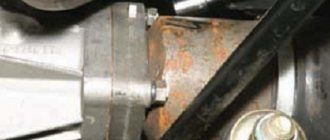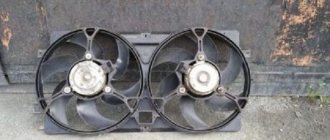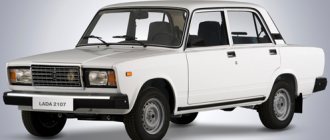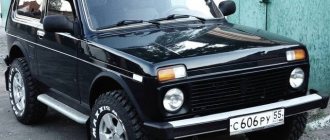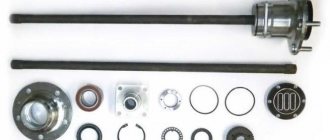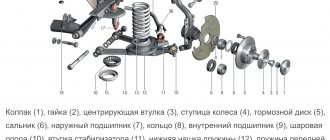In the opinion of the Russian consumer, the Chevrolet Niva or Renault Duster is an inexpensive car with increased cross-country ability, and a significant category of future owners cannot determine which brand to give preference to. Comparing two brands of cars is purely subjective, since a significant disadvantage for one owner will be insignificant for another. Let's try to objectively evaluate two cars produced in Russia. The Russian assembly puts the Chevrolet Niva and Renault Duster in the same position in terms of availability of spare parts, but car service centers are “more willing” to take on servicing VAZ products.
Exterior comparison
Let's start, perhaps, with the “clothes”, which, as you know, are used to greet even cars. Let’s face it, AvtoVAZ’s joint project with General Motors produced an outwardly laconic and design-complete car.
But this was at the turn of the century. The Niva received only a relatively minor restyling in 2009. Naturally, the Renault Duster looks more modern, although there are some skeptics who claim that its appearance is “morally outdated” for our time.
However, here Renault takes the lead.
Appearance
Both cars, especially if we talk about the latest modifications, look like real SUVs. For lovers of active recreation and long trips, both Duster and Niva will be excellent options. To be honest, the Niva’s exterior looks even more “off-road” than its today’s counterpart. Few people expected such an aggressive and at the same time dynamic appearance from a model that previously could hardly be called a crossover. The exterior of the Duster, in turn, can offer a very brutal and progressive design, with notes of traditionalism and the main features of the model range. Now about everything in more detail.
The front part of the Niva is equipped with a huge wind window, which sharply turns into a long hood with ribbed air ducts. A French car can respond to this with a more horizontal “frontal” and a hood with a very similar structure. On the nose of the Niva, you can see a low-mounted branded radiator grille, with a traditional logo on top of it, and narrow LED headlights. The Duster “nose” is equipped with a monolithic element consisting of a wide false radiator grille and stylish 3-zone headlights.
The bottom of the bumper on both models looks very powerful and reliable. The Niva has a narrow air intake here, partially covered with a plastic cover, on both sides of which there are oval fog lights. The Duster has a noticeably larger air intake, and the fog lights have a similar structure to the opponent's elements.
From the side, in the exterior of the cars, you can also find common points, but it is still noticeable that the designers used different stylistic concepts. Among the main design features of the Niva, I would like to note the relatively compact windows and stylish side ribs, which give the crossover dynamism. In Duster, the main emphasis is on volume and athleticism, and large windows and doors are only pleasant additions to the overall positive picture of the appearance. In terms of aerodynamics, the body of a French car is the best, as you can guess by comparing the dynamics indicators (figures below).
The rear of the Niva seems more massive than that of the Duster, and this is due to the higher body height of the Russian model. Serious differences in the exterior of the rear of the cars include the presence of a spare wheel on the trunk lid of the Niva, and the absence of one on the opponent. Both models boast powerful bumpers.
It's hard to give anyone the advantage at this point, so we award it a draw.
Interior
The interior decoration of the cars fully satisfies their budget status. If we take into account that the Niva was designed back in 1993,
and therefore Duster is more modern, the interior decoration of both competitors is in no way close to ideal.
Relatively inexpensive plastic tends to make squeaks after the first thousand kilometers. If desired, the owner must independently modify the sound insulation. When it comes to controls, an SUV doesn't have to be elegant. The entire design of cars rests on this basis. We will consider it a draw on this point.
Options
The configurations in these cars are now approximately equal, except that the Niva has worse sound insulation, there are no rear windows, and there is no exchange rate stability system. This makes it not as safe as Duster.
In terms of comfort, Duster is also clearly ahead. It’s enough to compare the volume of the trunk and if Renault has a small hint of a quite roomy “station wagon”, then the Niva has not received such a zest. However, this point is compensated by installing a “coffin” rack on the roof.
Suspension and chassis
Tuning the Renault Duster suspension makes driving comfortable. It holds the road better, even at high speeds. Driving over uneven surfaces, thanks to the moderate stiffness of the suspension, is not a problem. A huge portion of the energy is absorbed by the front levers. Chevrolet Niva lags significantly behind in this regard. Stiff springs transmit vibrations to the body, and when driving along the highway at high speed, you can encounter vibration that occurs when the driveshafts are unbalanced. The owners note that this vibration is the “calling card” of the Niva.
What to choose: Duster or Shnivy
The manufacturer intends to offer the new Chevrolet Niva in two trim levels. Basic equipment will cost 450 thousand rubles. According to another source - 510 thousand rubles. The luxury version will be equipped with a navigation system and multimedia equipment, and will cost 55 thousand more. The trunk door in the luxury version will be equipped with an electric drive.
The French crossover will cost almost one and a half times more in the basic version, and twice as much as the Niva in the privileged version. But we must give credit to the French manufacturer; their car is packaged better. The Niva cannot boast of a central door lock, Glonass global navigation system, electromechanical power steering and other innovations that the Renault Duster 2021 is equipped with.
Perhaps the following review story will help readers decide which car should be preferred: Chevrolet Niva or Renault Duster.
One of the YouTube channels organized a kind of regional rally. 50 cars took part in this cross-country vehicle race. Among them were UAZs, Volkswagens, Subarus, several Nivas of different years of production and a couple of Renault Dusters from 2009-2013. Domestic Nivas and UAZs coped best with field off-road conditions. Duster was also good in field conditions. He ended up in an honorable third place. True, on one of the washed-out sections of the road, Niva took the Frenchman in tow and pulled him out of the mud.
So if a car enthusiast prefers comfort and European prestige and plans to drive only around the city, he will choose the French model. A person who needs a workhorse that will provide equal cross-country ability in the city and in the forest will choose the domestic Niva.
Other comparisons:
KIA Sportage vs Renault Duster
Nissan Qashqai vs Renault Duster
Engine and transmission
Many characteristics of a car depend on the coordinated operation of the power plant and transmission. Renault Duster is equipped with three types of engines, 1.5 liters (diesel), 1.6 liters (gasoline) and 2.0 liters (petrol). The two-liter power unit is paired with a manual and automatic PP gearbox. The power of the 2 liter engine is 143 hp, and the 1.6 liter engine is 102 hp. Judging by the reviews of the owners, the engine power is quite enough to turn the Duster into a city crossover, but the off-road qualities are still questioned.
The VAZ is equipped with a native engine with a volume of 1.7 liters, while its power is only 80 hp.
It would seem that AvtoVAZ has no chance in this indicator, but the Chevrolet Niva is equipped not only with a five-speed manual transmission, but also with a transfer case that allows increasing torque.
The Niva is good both for off-road driving and for overcoming steep slopes.
Four-wheel drive
Both cars are all-wheel drive. In the field, an all-wheel drive scheme was implemented with a rigid connection through the center differential of both axles. It is not possible to disable rear- or front-wheel drive, which causes fuel consumption to increase significantly. However, off-road the Niva has no equal, because the rigid blocking scheme allows you to maintain cross-country ability without any losses. Definitely suitable for places where there are really no roads.
In Duster, all-wheel drive is implemented through a viscous coupling in the rear axle. This allows you to disable and connect all-wheel drive manually or automatically. In addition, there is a differential lock. This has a positive effect on fuel efficiency. However, during prolonged slipping, the electronics protect against overheating of the clutch and can disable the rear wheels from trying to get out, leaving the driver alone with the front-wheel drive and the trap. Suitable only for light off-road use and maintaining controllability on slippery surfaces.
Service cost
The most difficult task is to estimate the cost of servicing two different cars. The difficulty lies in the fact that the list of routine maintenance work, as well as the list of interservice work, is different. Spare parts for Niva Chevrolet are available in almost every store. The cost of parts for purely Russian cars is legendary. However, the complex design of the transmission increases the number of consumables. When servicing a car, changing the engine oil or replacing the brake pads is indispensable. Given the low quality of components, some types of work have to be performed repeatedly, not according to regulations.
